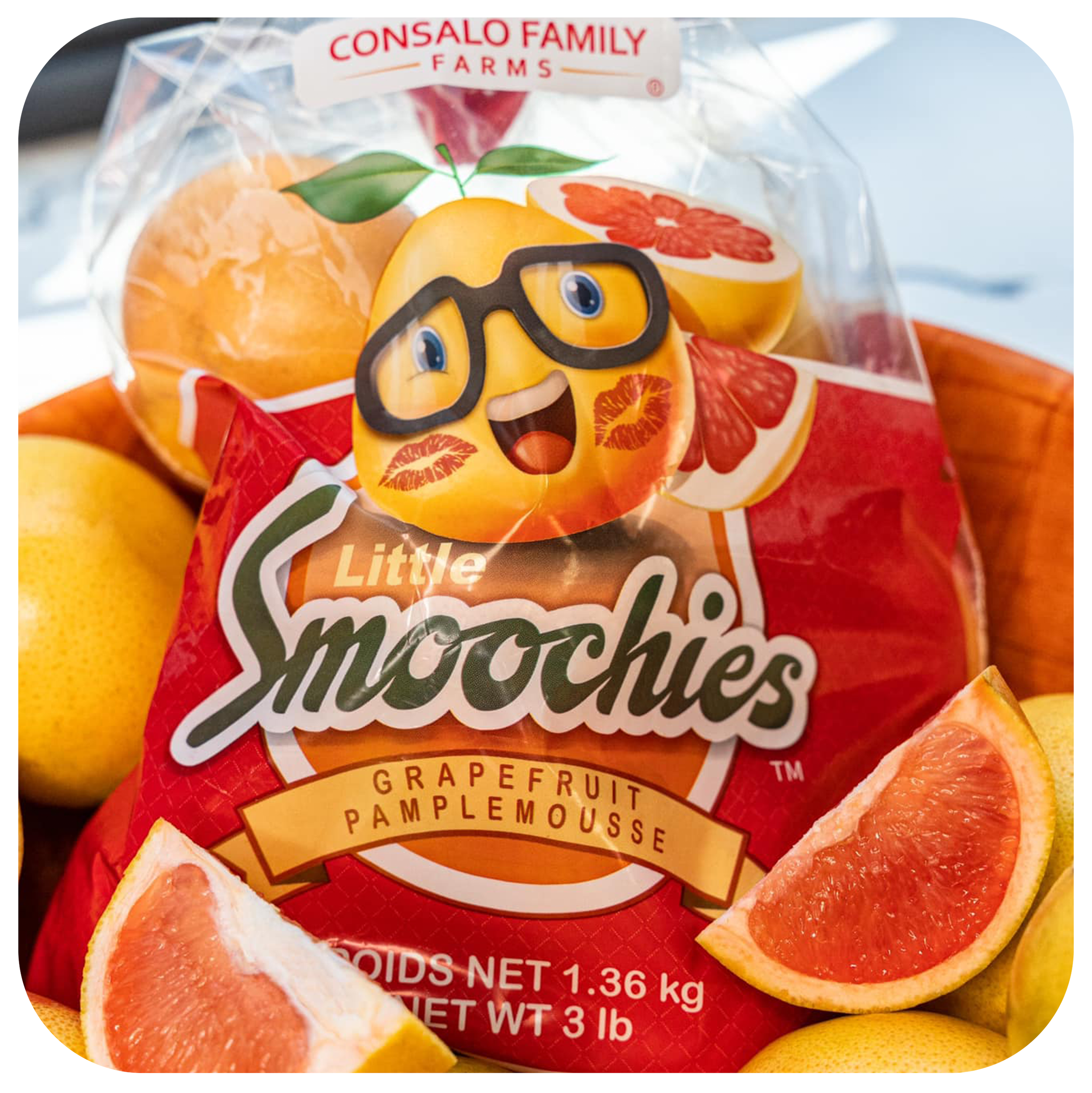
Little Smoochies ®
-

Grapefruit
Grapefruit is a citrus fruit with a flavor that can range from bittersweet to sour. It contains a range of essential vitamins and minerals. People can consume the fruit whole or as a juice or pulp. The grapefruit first appeared in the 18th century, as a result of crossing a pomelo and an orange.
Grapefruits, like oranges and other citrus fruits, are high in vitamin C. In fact, one whole medium grapefruit provides you with 100% of your daily requirement of vitamin C, a powerful antioxidant that is great for your immune system and can help you fight off viruses and bacteria that can cause disease.
Our Favorite Ways to use Grapefruit — Grapefruit Fish Ceviche & Grapefruit Paloma Cocktail
-

Mandarins
The mandarin orange, also known as mandarin or mandarine, is a small citrus tree fruit. Mandarins grow on flowering, small to moderately-sized citrus trees. As they ripen, they change from a deep green to their recognizable orange color and grow to a width of about 1.6–3 inches. Treated as a distinct species of orange, mandarins are usually eaten plain or in fruit salads.
Mandarins contain vitamins A, B, and a high level of vitamin C. Naturally sweet, mandarin oranges need no added sugars to taste great and can help satisfy your sweet tooth. They are fat-free and low-sodium, making them a healthy snack choice.
Our Favorite Ways to use Mandarins — Mandarin Orange Spinach Salad & Sweet Mandarin Orange Scones
-

Oranges
The orange is a tropical to semitropical fruit that is round with finely textured skin. Oranges grow on small trees, about five to eight meters tall. The fruit itself measures about three inches in diameter. Oranges are classified into two general categories, sweet and bitter, and come in different varieties. There are now over six hundred varieties of oranges worldwide.
Oranges, like other citrus fruits, are an excellent source of vitamin C. They can facilitate absorption of iron and accelerate wound healing. Research shows that the peel of an orange has health benefits as well. The orange peel can significantly lower cholesterol.
Our Favorite Ways to use Oranges — Fresh Squeezed Orange Juice, Citrus Salad with Feta and Pistachios & Orange Marmalade
-

Limes
Limes are roughly spherical in shape and their diameter ranges from three to six centimeters. When limes are harvested, they have a green, thin, and porous peel. Limes have higher contents of sugars and acids than lemons do.
Scientists are currently researching ways to incorporate limes into medicines and herbal formulas. They have a bacteria-fighting ability and their peel and juices contain antioxidants that slow down the process of atherogenesis, the buildup of plaque on artery walls.
Our Favorites Ways to use Limes — Cilantro-Lime Guacamole & Key Lime Pie
-

Lemons
Lemons are oval and the peel is usually light yellow, though some lemons have stripes of green and white. Some lemons are seedless, but most have a few seeds. Lemons can be produced year round in the right climate. A single lemon tree can produce between five and six hundred pounds of lemons in one year.
Lemons are nature’s top source of citric acid. Lemon juice promotes perspiration and helps block pain. The fruit is alkalizing for the body, which can help restore the body's pH.
Our Favorite Ways to use Lemons — Fresh Homemade Lemonade, Lemon Baked Salmon & Pasta a Limone
